Are you considering natural toothpaste as an alternative to large commercial brands? If so, then you are joining the growing ranks of people who are demanding safer, non-chemical ingredients for their oral health routine.
The good news is, due to the increase in demand for natural toothpaste alternatives, there are plenty of different kinds on the market—both with fluoride and without fluoride, for sensitive teeth, and for whitening—to choose from.
Or you can take it a step further and make your own homemade toothpaste using some simple recipes. Whichever option you're considering, you're in the right place! Keep reading to find out:
- What is toothpaste made of?
- The benefits and potential drawbacks of different toothpaste ingredients
- What's safe for babies, toddlers and children
- How to make natural toothpaste
- Best natural toothpaste options
We hope this information helps you make the right decision for you and your family.
In This Article
What is toothpaste made of?
Look at the ingredients on your tube of toothpaste and you'll probably find a list of words that don't make much sense to you. Of course, each one serves a particular purpose. The products in toothpaste can help:
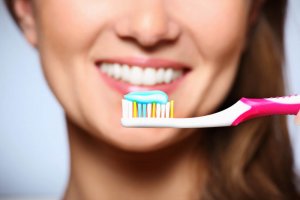

- Protect against plaque and tooth decay
- Remove food particles from teeth
- Improve the texture and taste
- Get the toothpaste into hard-to-reach places
- Freshen breath
- Fight gingivitis (gum disease)
- Whiten teeth by removing surface stains
- Reduce tooth sensitivity
With so many different products available, each one containing a different combination of ingredients and offering different benefits, you can see why it's hard to know which is the best toothpaste for you.
To complicate matters, although these ingredients serve a particular purpose in aiding oral hygiene, they might prove detrimental to other aspects of your health.
Why do toothpaste ingredients matter?
You might be wondering why it matters what's in your toothpaste; after all, you spit it out rather than swallow it.
Well, our mouths and gums are lined with mucous membranes, known as oral mucosa. This tissue contains the nerves that let you sense hot and cold, taste buds so you can experience different flavors, and salivary glands to keep your mouth moist. It also helps protect your body against some bacteria and toxins.
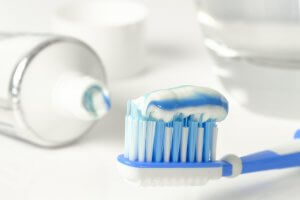

However, certain substances are very easily absorbed through the oral mucosa. This means that even in the two minutes while you're brushing, ingredients from your toothpaste can enter your bloodstream.
Some ingredients might also cause an allergic reaction in certain people, leading to mouth sores, dry mouth, or digestive problems.
So, how do you know which toothpaste ingredients are genuinely beneficial and which might be causing harm to your body? Toothpaste manufacturers will, of course, rigorously defend the benefits of their products. And the ADA has come out in support of science-based oral health products.
At the same time, it's not hard to find articles and studies pointing to numerous cancer risks and other health problems.
Below you'll find information about some of the most common (and controversial) toothpaste ingredients. We have given both the benefits claimed by manufacturers and the health concerns raised by others, so you can make a more informed choice. In many cases, there are ongoing disputes regarding claims over safety and harmfulness, so it's important you do further research and draw your own conclusions if any of these ingredients concern you.
This information is summarized in a table at the end of this section before we go on to look at natural and homemade toothpaste recipe options.
Fluoride
Fluoride is a mineral which occurs naturally in water and some foods. It has been added to many brands of toothpaste since the 1970s to help fight tooth decay.
Fluoride usually appears in the ingredients list as sodium fluoride, stannous fluoride or sodium monofluorophosphate. It's measured in parts per million (ppm).
The following video explains how we originally discovered fluoride was linked to healthy teeth, and how exactly it works to prevent decay.
The ADA hasn't recently specified the appropriate concentration for fluoride for different age groups, but internationally, it is generally recommended to use toothpaste with the following concentrations of fluoride:
Age | Fluoride concentration | Amount to use |
Children under 3 | At least 1000ppm | A smear |
Children 3 to 6 | At least 1000ppm | A pea-sized amount |
Children over 6 and adults | 1350-1500ppm | A pea-sized amount |
The main concern about fluoride is its potential to cause a condition called dental fluorosis. This occurs when excessive amounts of fluoride are ingested while enamel is forming, i.e. when children are young. Mild fluorosis (the most common form) results in small, white patches on the surface of the teeth. In severe cases, teeth can become discolored and pitted, looking like they have been corroded.


Fortunately, dental fluorosis is only a cosmetic issue, it doesn't actually affect the health of your teeth.
However, fluoride can be toxic when ingested in high concentrations, but the amounts contained in toothpaste are far too low to present this risk.
It's worth noting that fluoride needs to remain on the teeth for a while after brushing in order to be effective. You should therefore not rinse with water or natural mouthwash right after brushing, as this washes away the fluoride.
If you decide to give your child, toddler or baby toothpaste without fluoride, speak to your dentist about other ways to protect children's teeth against decay.
Triclosan
Triclosan is used in some kinds of toothpaste for its antibacterial properties which help prevent gum disease. Although proven effective at this, potential side-effects include hormone disruption, cancer, and antibiotic resistance.
Many manufacturers are now phasing out the use of triclosan in toothpaste, soaps and cleaning products, so it's becoming easier to avoid this ingredient if you wish. However, no health authorities in the US, UK, or EU have found it to be unsafe for use in toothpaste.
Sodium lauryl sulfate (SLS)
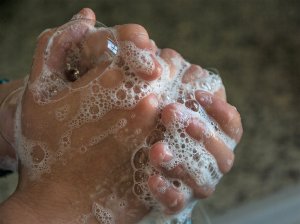

SLS is a foaming agent (surfactant) which is also used in products like shampoo and liquid soap. It makes it easier for you to spread toothpaste around your mouth, and it also helps dissolve dirt and grease. However, SLS-free toothpaste can be just as effective as long as you brush properly.
Some people have raised concerns about the toxic or carcinogenic nature of SLS, but it hasn't been ruled unsafe for use in toothpaste. Perhaps a more common complaint regarding SLS is skin irritation, which in the case of toothpaste, materializes as canker sores (mouth ulcers).
Studies have shown that switching to an SLS-free toothpaste can reduce the occurrence of canker sores, or at least make them less painful. If you suffer from mouth ulcers, it could be worth a try, you'll just need to get used to the lack of foam as you brush.
Abrasives
For toothpastes to work effectively, they need to be slightly abrasive. Without small abrasive particles, they couldn't scrub bits of food, plaque, and stains from the surface of teeth. However, too much abrasiveness and you risk damaging your tooth enamel or gums.
The abrasive ingredients used in toothpastes can be natural or synthetic, and include:
- Calcium carbonate
- Sodium bicarbonate (baking soda)
- Hydrated silica
- Aluminum hydroxide
- Calcium hydrogen phosphates
- Activated charcoal
- Mica
- Hydroxyapatite
Tartar control and whitening toothpastes are typically the most abrasive since they need to work harder to achieve the results they promise. As they have the potential to remove more tooth enamel, they can lead to sensitivity in some people's teeth. If you want to know how abrasive your toothpaste is, check out this handy guide compiled by a dentist in US. It ranks dozens of brands according to their Radioactive Dentin Abrasiveness (RDA).
Note that it's not just over-abrasive toothpaste that can cause tooth sensitivity and damage gums. If your toothbrush bristles are too hard or you brush with too much force, this can have a similarly damaging effect.
Read more about safe ways to whiten your teeth, in our full guide to teeth whitening methods and costs.
Microbeads
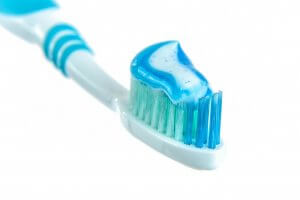

Some brands of toothpaste around the world contain microbeads to help with abrasion. However, the use of these tiny pieces of plastic in toothpaste and other cosmetic products has recently come under scrutiny because of their environmental impact. In addition, some dental professionals have noticed microbeads becoming lodged in patients' gum pockets, increasing the risk of infection.
In December 18th, 2015, the US government banned the use of microbeads in cosmetics and personal care products, including toothpaste. In 2018, similar measures were taken in the UK.
Although you no longer need to worry about this particular ingredient if you live in the US or the UK, it's a useful illustration of how toothpaste manufacturers don't always get it right, even in this heavily regulated environment. Rather than blindly accepting every claim they make, it's a good idea to do a bit of extra research and form your own opinions on what's the best and safest toothpaste for your needs.
Some toothpastes in the US carry the American Dental Association seal of approval. This offers assurance that any claims the manufacturer makes are backed by reliable scientific evidence. You can find a list of approved products here.
Humectants and thickening agents
Humectants help stop toothpaste from drying out in the tube. Common humectants include glycerol (also called glycerine), sorbitol (also a sweetener, see below), and propylene glycol.
Toothpastes also contain thickening agents or binders to help keep all the ingredients together and give the paste a consistent texture. These include natural gums and colloids, synthetic cellulose, and carrageenan.
Without these ingredients, toothpaste would either get stuck in the tube or be too runny to stay on your toothbrush. However, some of these products might cause digestive problems for certain people, especially if consumed in large quantities. Some professionals argue that glycerol forms a coating over the teeth, inhibiting remineralization from other ingredients.
Natural toothpastes are available without any artificial preservatives or thickeners, and if you make your own toothpaste then you won't need to worry about adding them.
Sweeteners and flavors
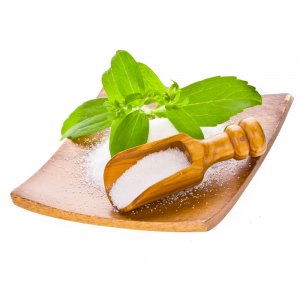

You won't be surprised to discover that all these ingredients don't taste great by themselves. That's why toothpaste also contains various flavors and sweeteners to make it more palatable.
You'd think the one ingredient you wouldn't find in toothpaste is sugar, since that's one of the main causes of tooth decay. The majority of brands do use a sugar-free alternative to sweeten their toothpaste but it's still worth double-checking the ingredients list to see if there is sugar in the toothpaste you or your children use.
Sweeteners commonly used in toothpaste include:
- Sorbitol: A naturally-occurring sugar alcohol used in many sugar-free foods. May cause bloating and other digestive problems for some people.
- Saccharin: Also used to flavor some sugar-free drinks and foods. Although it has been linked to cancer in rats when consumed in high doses, research has shown the same risk does not apply to humans.
- Xylitol: A naturally-occurring sugar alcohol with antibacterial properties, also used in sugar-free chewing gum and mints. It has been shown to reduce the risk of dental caries and promote enamel remineralization when combined with fluoride in toothpaste, although other studies have shown no such benefits. Excessive consumption can result in diarrhea and bloating. It's also poisonous for dogs, so xylitol toothpaste shouldn't be used on your pets.
- Aspartame: A low-calorie sweetener widely used in foods and drinks all over the world. Many scare stories have circulated since its introduction in the US in the 80s, linking it to various kinds of cancer. However, the FDA has concluded multiple times that there is not enough evidence to support this link. It is, however, a source of phenylalanine, which should be avoided by people with the rare genetic condition phenylketonuria (PKU).
- Stevia: A natural sugar alcohol derived from a plant native to South America. Used as a sweetener to improve the taste of many natural toothpastes. Can also be used in homemade toothpaste recipes.
Toothpaste is traditionally mint-flavored, but some people prefer toothpaste without mint because they don't like the taste or have a sensitivity to peppermint oil. Fortunately, there are plenty of mint-free options available.
Non-mint toothpastes can be completely unflavored, or they may have other flavors such as:
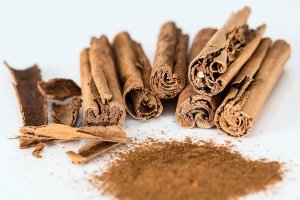

- Clove
- Cinnamon
- Fennel
- Ginger
- Fruit or bubblegum (usually marketed at kids)
Some commercial brands produce these flavors, but you'll probably find more choices if you look to lesser-known, natural brands. You'll also find more mild mint options; worth a try if you find the taste of regular toothpaste overpowering.
Ingredients summary
Here is an overview of the different ingredients found in commercial toothpastes, why they're there, and what the potential risks are.
Ingredient | Purpose/benefits | Potential concerns |
Fluoride | Fights tooth decay | Risk of dental fluorosis if ingested in large quantities by young children |
Triclosan | Antibacterial – helps prevent gum disease | Hormone disruption and antibiotic resistance |
Sodium lauryl sulphate (SLS) | Foaming agent – makes toothpaste foamy and dissolves dirt | Skin irritation causing mouth ulcers; possible cancer risk |
Abrasives (various natural and synthetic) | Scrub dirt and plaque off teeth; stronger abrasives help remove stains for whitening | Too much abrasion removes enamel, causing sensitivity, and can damage gums |
Humectants and thickeners (various) | Keep toothpaste moist and help improve the texture | Some people experience digestive problems from using certain products |
Sweeteners (various natural and synthetic) | Improve taste | Some artificial sweeteners can cause bloating and other digestive problems; some the subject of cancer scares but considered safe for humans |
For information only; not intended as health advice | ||
Remember, many of these potential concerns have not been scientifically proven, and not everyone will react in the same way to each ingredient. You can minimize many of the risks simply by training children to spit out their toothpaste rather than swallow it.
If you're worried about using any of these products then you could try one of the DIY all-natural toothpaste recipes listed below. Alternatively, you can opt for a store-bought toothpaste made with more natural ingredients. You might also be interested in our article on natural tooth care.
Homemade toothpaste recipes
If you want to know exactly what is going into your toothpaste, your best bet is to make an all-natural toothpaste yourself. There are all kinds of DIY toothpaste recipes that use natural ingredients, many that you may already have at home.
If you're wondering how to make homemade natural toothpaste using a basic recipe, here are some of the natural ingredients you can use:
Natural ingredient | Purpose/remarks |
Bicarbonate of soda (baking powder) | Helps remove dirt and stains from teeth without being too abrasive. Neutralizes acids in the mouth. |
Coconut oil | Promotes oral health, may fight bacteria that cause cavities. |
Activated charcoal | Helps remove surface stains for teeth whitening. |
Bentonite clay | Gently polishes teeth. Neutralizes acids in the mouth and aids remineralization. |
Stevia | A natural sweetener. Available powdered, liquid, or raw. |
Xylitol | A sweetener which also fights the bacteria that cause cavities. Use sparingly to avoid overly sweet toothpaste. |
Sea salt | Antibacterial properties. |
Raw cacao powder | Promotes remineralization. Coarsely ground cacao nibs can also be used as an abrasive. |
Essential oils or extracts (peppermint, tea tree, lemon, orange, cinnamon, clove, etc.) | Add flavor, some have antibacterial properties. Some essential oils carry possible health risks or are unsuitable for children and toddlers so research your choice first. |
Try to avoid using ingredients that are naturally acidic, such as lemon juice. Acid destroys tooth enamel and can cause irreversible damage over time.
Have a look at the following homemade natural toothpaste recipes you can try. If you don't like the texture of the first one you make, try another which uses different ingredients.
You can experiment with different flavors until you find a taste you like and the best natural toothpaste for you. If you're making a homemade toothpaste for toddlers or babies, avoid using essential oils and instead use milder plant extracts or just stevia.
If you'd rather try making homemade toothpaste tablets, you can do that too — they may be more convenient for on-the-go use.
Also keep in mind that you can make any of these not only a natural, but also a totally organic toothpaste recipe by making sure that all of the ingredients you use are certified organic.
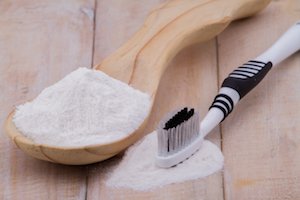

Homemade toothpaste with natural baking soda
Many DIY natural toothpaste recipes (and even some commercial ones) use baking soda (sodium bicarbonate) for its abrasiveness and alkalinity. It's also used in many DIY mouthwash recipes.
The following is a natural whitening toothpaste using baking soda. For this basic homemade baking soda toothpaste recipe, you'll need:
- 100g of baking soda (a little less than half a cup)
- 10-15 drops of your chosen oil for flavor
- purified water
- 1 tsp fine sea salt
Simply mix the baking soda, salt and oil together then gradually add water a little at a time until the paste reaches a consistency that suits you. The sea salt adds extra minerals, but if you don't like the taste you can just leave this out. Many people swear by this toothpaste as the best natural whitening toothpaste, so give it a try!
Bentonite clay toothpaste recipe
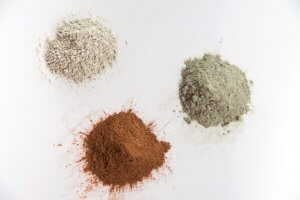

Some people use powdered bentonite clay in their all-natural toothpaste for its remineralizing properties. It's also a very gentle abrasive, and can be used as a recipe for homemade toothpaste without baking soda. This DIY toothpaste recipe uses essential peppermint oil for fresh breath.
Although the ingredients require some up-front investment, the overall cost per ounce of this cheap toothpaste works out to be about 1/3 less than buying the brand version.
It's worth noting that you shouldn't store or handle the clay with anything metal, as this can alter its properties. Instead use glass, plastic or wooden jars and scoops.
Vegan coconut oil toothpaste recipe
In the following video, Kathleen shows how to make homemade toothpaste with coconut oil. She flavors this recipe with peppermint oil.
The basic homemade coconut oil toothpaste recipe requires just three ingredients:
- 1/2 cup coconut oil
- 2–3 Tablespoons baking soda
- 15–20 drops of peppermint oil
In case you don't have time to watch the video, here is the method Kathleen uses for her homemade toothpaste with coconut oil:
- Heat the coconut oil up if it's difficult to mix
- Add the baking soda to the coconut oil
- Add peppermint oil
- Mix thoroughly
- Store in an airtight glass container
She says that the mixture doesn't taste great—a weird combination of salty and coconut, but emphasizes that it's healthy and natural and that's more important than the taste!
Chocolate toothpaste
If that coconut oil and baking soda toothpaste recipe didn't strike your fancy, consider this chocolate toothpaste. Yes, you read that right! Chocolate! But we're not talking about scrubbing your teeth with a bar of Hershey's.
Instead, in this homemade toothpaste recipe, you'll need to use raw cacao to benefit from a naturally occurring chemical compound called theobromine. Theobromine has been shown to protect enamel through remineralization, and it can also help reduce tooth sensitivity. In this article, Emily of Naturally Free Life explains more about the science behind cacao and offers this recipe for homemade chocolate toothpaste:
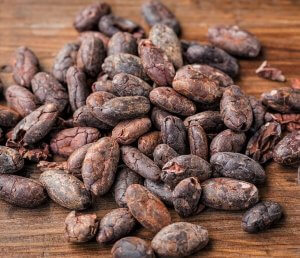

Ingredients:
- 50g coconut oil
- 1 tsp raw cacao powder
- 1 tsp bentonite clay
- 1 tbsp baking powder
- ½ tsp sea salt
- 20–30 drops of your chosen essential oil for taste, if desired
To make it, just soften the coconut oil so you can mix in the other ingredients, but don't let it become runny as the baking powder will sink to the bottom. Emily adds a helpful reminder about storage: any coconut oil toothpastes will melt if they get too hot, so store them out of the sun.
If you have problems getting your toddler or child to brush their teeth properly, this chocolate toothpaste surely has to be worth a try. A fun kids electric toothbrush might also help.
There are also various branded toothpastes available which use natural ingredients and are flavored to appeal to children. Keep reading to find out more about buying pre-made natural toothpaste.
Coconut oil turmeric toothpaste recipe
Why make homemade turmeric toothpaste?
Well, according to the Indian Society of Periodontology, turmeric has been found to have anti-plaque, anti-inflammatory and anti-microbial properties. Some also cite turmeric's whitening and breath-freshening abilities, although this isn't mentioned in the periodontology article. This natural toothpaste with coconut oil and turmeric is loved by many natural toothpaste fans, so find out yourself if it's for you!
For this turmeric toothpaste recipe you'll need:
- 2 tablespoons coconut oil
- 1 teaspoon turmeric
- 1 teaspoon baking soda
- a couple of drops of peppermint oil
Simply heat your coconut oil to room temperature, and mash it together with the turmeric and baking soda. Once they are well-combined you can add the peppermint oil.
Natural remineralizing toothpaste recipe
Finally, if you want to try your hand at a more complex recipe, how about this remineralizing and whitening toothpaste from healthy living blogger DaNelle? She uses a few familiar ingredients plus some extra minerals to boost enamel remineralization and add whitening properties.
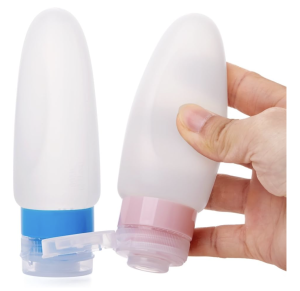

Each batch of homemade remineralizing toothpaste requires:
- 120ml filtered water
- 30g bentonite clay
- 30g tbsp coconut oil
- 5 tsp calcium/magnesium powder (blend)
- ¼ tsp unprocessed salt
- ¼ tsp baking soda
- 10 drops trace minerals
- 20-30 drops of your preferred essential oil for flavor
- Stevia to taste, if desired (a little goes a long way)
Simply mix all the ingredients in a food processor until smooth and store in a glass jar or silicone squeeze tube. It should last up to three months.
View DaNelle's original homemade remineralizing toothpaste recipe and read more about the benefits of these ingredients here.
You can read more about how to remineralize teeth in our separate article here.
The best all-natural toothpaste brands available in the US
Although homemade toothpastes give you complete control over what you put in your mouth, we know not everyone has the time to make their own toothpaste at home. Certain recipes can also be quite expensive because of the ingredients they use. Plus, homemade pastes may lack the visual appeal that encourages your family to brush properly every day!
If you're still keen to avoid the chemicals added to most commercial brands, one alternative is to buy a natural toothpaste online or from a supermarket or chemist.
There is no official classification for products labeled as ‘natural' so it can mean different things to different people. You might be looking to exclude certain ingredients, for instance, or perhaps you want an herbal or vegan toothpaste. Remember, organic is different than natural, and if you're looking for organic, it must be labeled as certified organic.
And you know what pairs well with a natural toothpaste? A natural toothbrush! Have a look at our guide for bamboo and eco-friendly toothbrushes in our comprehensive guide.
Here we have listed some of the most popular natural toothpastes sold in the US. This is just to give you an idea of what is available, as there are many options on the market, so you're bound to find the best all-natural toothpaste for you.
Davids Premium Natural Toothpaste
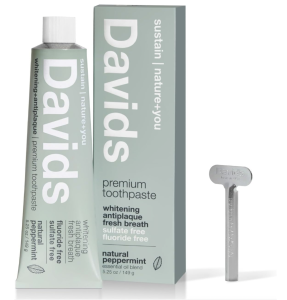

Davids Natural Toothpaste is made in California using naturally sourced and naturally derived ingredients. This natural toothpaste is said to whiten teeth, reduce plaque and freshen breath—just like any commercial toothpaste, but made locally and from natural ingredients.
Baking soda is used to neutralize acids that could potentially damage your enamel, and mint oil is added for a fresh flavor.
What's more, if you're an EWG nerd and spend hours browsing their site for products with low hazard ratings, then you're in luck! Because Davids has been awarded the EWG Verified certification for safe ingredients.
With Davids, you can choose between peppermint and peppermint and charcoal for enhanced whitening.
The Natural Dentist toothpaste
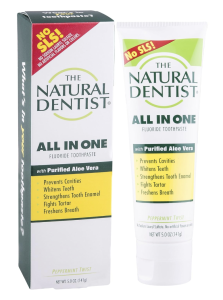

The Natural Dentist toothpaste is advertised as being an “All In One” toothpaste that will fight cavities, whiten teeth, keep gums healthy and freshen breath. It has a fresh peppermint flavor and contains no Sodium Lauryl Sulphate, which some worry can be linked to skin irritation, canker sores and worse. It also has no artificial dyes or sweeteners.
This toothpaste does contain fluoride, so it is not ideal for those looking to avoid the controversial ingredient. However if you want to follow the guidance from the ADA, this toothpaste might be what you're looking for.
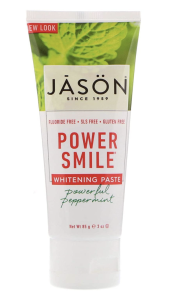

Jason natural toothpaste
If you like strong peppermint flavor, want to whiten teeth and are looking for a natural fluoride-free toothpaste, you may be interested in checking out Jason Powersmile Whitening Paste. This natural toothpaste combines bamboo powder, calcium carbonate and baking soda to whiten teeth. Grapefruit seed and perilla seed extracts are employed to fight against acids from sugar, and the peppermint oil will leave your breath quite fresh.
Jason uses no animal by-products, artificial colors, GMOs, parabens, nor sulfates in their toothpaste, and they also promise that it's cruelty-free.
Nature's Gate natural toothpaste
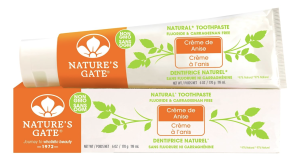

Here's another natural toothpaste for those looking for an option that doesn't contain fluoride. Nature's Gate Natural Crème de Peppermint Toothpaste. This toothpaste is made to clean your mouth naturally, polish teeth and freshen breath. It comes in a recyclable tube, so you can feel extra good about that.
Its ingredients include calcium carbonate, aloe barbadensis leaf juice, soap bark root extract, white tea leaf extract, cranberry fruit extract, ginger root extract and grape seed extract.
Nature's Gate also promises to contain no artificial flavors or sweeteners. It is paraben-free, carrageenan-free, soy-free, sulfate-free, non-GMO and cruelty-free.
Tom's natural toothpaste
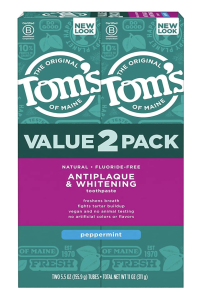

Tom's of Maine is a pretty popular household name when it comes to natural personal hygiene products. Tom's products meet high standards of social and environmental performance, and the makers of Tom's pride themselves for their transparency to the public, and their healthy balance between the desire to make a profit and desire to do good in the world.
Their antiplaque and whitening toothpaste contains no fluoride, and instead uses calcium carbonate as a mild abrasive, and zinc citrate to freshen your breath. Alternatively, if you are looking for a natural toothpaste for sensitive teeth, you can check out Tom's Rapid Relief toothpaste.
They also claim that their ingredients are never tested on animals and they donate 10% of profits to charities.
CaliWhite Activated Charcoal toothpaste
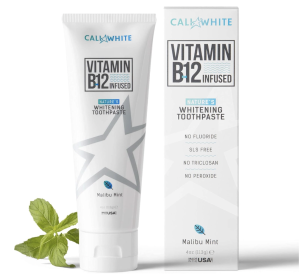

This natural charcoal whitener toothpaste features food-grade activated charcoal, certified organic coconut oil and baking soda to whiten teeth. There have been some concerns about charcoal being too harsh on enamel, wearing it down and causing tooth sensitivity, but this toothpaste claims “zero effect” on tooth sensitivity.
Additionally, this natural charcoal toothpaste is made in the US, vegan, fluoride-free and safe for kids. If you are interested in knowing more about charcoal toothpaste, including how to use it safely, be sure to also check out our review of the best charcoal toothpastes.
There are also charcoal-infused toothbrushes that may also help whiten your smile.
Best natural toothpaste brands for kids
If you're looking for natural toothpaste for yourself, then you are probably interested in a natural toothpaste for kids too. But sometimes kids need a little extra encouragement to look after their teeth, like fun flavors and smaller kid-friendly tubes. To get your kids on board with natural toothpaste, check out the following brands that have become common staples as natural toothpaste for kids in all-natural households with children:
- Tom's of Maine children's toothpaste: Fruity flavor, ADA-approved and fluoride for cavity protection
- Hello kids toothpaste: Watermelon flavor, vegan and fluoride-free
- Jason Kids Only toothpaste: Orange flavor, kosher-certified
Our guide to toothpaste for babies and children has more recommendations for age-appropriate kids' toothpastes.
Conclusion
Commercial toothpastes contain many ingredients which some people believe carry health risks. Having done your own research into these, you may decide to avoid things like fluoride, triclosan, SLS, and artificial flavors, coloring and preservatives.
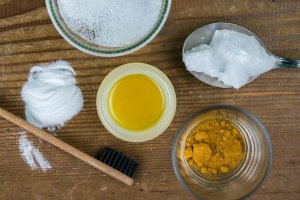

Remember that fluoride toothpaste is currently promoted by many dental organizations and governing bodies as a proven way to fight tooth decay. If you decide not to use it for whatever reason, speak to your dentist about other ways to protect your teeth, especially if you have children.
Xylitol is a natural alternative to fluoride which some studies have shown to fight decay and help remineralization.
You can buy natural toothpaste, both with and without fluoride, which doesn't contain many of the most controversial toothpaste ingredients. These are typically more expensive than standard toothpaste varieties.
Another option is to make your own natural toothpaste at home with ingredients like baking soda, clay, coconut oil and essential oils. This lets you control what you put in your body and may also work out to be cheaper, depending on the recipe you follow.
Whatever you decide, we hope you now understand more about what various ingredients do and which ones you're happy using in your toothpaste. If you'd like to swap out your dental floss for a more natural option as well, you can read all about plastic-free dental floss.
FAQs
Can you make homemade toothpaste without baking soda?
Baking soda is often used in natural homemade toothpaste recipes due to it's mild abrasive and whitening properties. But some people worry that baking soda may cause undue damage to enamel. The good news is, any of the recipes mentioned above (except for the baking soda toothpaste) can be made without the baking soda and will still retain most of their touted cleaning and whitening properties.
What is the best homemade toothpaste?
The best DIY toothpaste recipe for you depends on what you're looking for. You can check out the recipes mentioned above to get started. If you want something basic, try a baking soda toothpaste recipe. If you want to try oil pulling, make sure to choose one of the recipes that include coconut oil. If you are really interested in whitening, try adding some activated charcoal powder to a basic homemade toothpaste recipe.
Can you make homemade toothpaste without coconut oil?
Many homemade toothpaste recipes include coconut oil for its supposed ability to freshen breath, whiten teeth and promote your overall oral health. However, you don't have to use coconut oil. If you are averse to having coconut oil in your toothpaste, just mix your toothpaste with water instead, and add a few drops of peppermint essential oil.
MouthHealthy.org: Fluorosis. Consulted 26 September 2019.
NCBI: Risks to oral health and intervention. Consulted 26 September 2019.
FDA: Risks to oral health and intervention. Consulted 26 September 2019.
NCBI: Risks to oral health and intervention. Consulted 26 September 2019.
Cancer.gov: Risks to oral health and intervention. Consulted 26 September 2019.
Whatgreatgrandmaate.com: Homemade Clay Toothpaste. Consulted 21st September 2020.
Familydentisttree.com: HOW ABRASIVE IS MY TOOTHPASTE AND WHAT’S IT DOING TO MY TEETH? Consulted 21st September 2020.
Naturallyfreelife.com: Risks to oral health and intervention. Consulted 26 September 2019.
Journal of Indian Society of Periodontology: Risks to oral health and intervention. Consulted 26 September 2019.
Weedemandreap.com: Risks to oral health and intervention. Consulted 26 September 2019.




